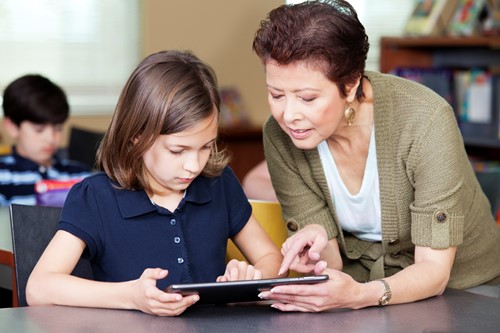By Michael Hilkemeijer
Meeting Children Where They Are: Extending Learning in the Digital Age
Understanding responsive practice in the early years
Responsiveness is recognised as one of the most vital practices in early childhood education. It is the educator’s ability to attune to children’s strengths, interests, capabilities, and cultural knowledge and use these to shape curriculum decisions.
The Early Years Learning Framework (V2.0) makes this explicit: educators must listen actively, respect children’s voices, and extend their learning through intentional yet flexible approaches. This is not a passive act of waiting for children to lead — responsiveness involves watching closely, asking open-ended questions, and scaffolding ideas in the moment.
Research shows that responsiveness encompasses several layers:
-
Relational: Building warm, secure interactions that support children’s wellbeing and confidence.
-
Cultural: Embedding family languages, traditions, and funds of knowledge into daily learning experiences (The Education Hub).
-
Cognitive: Extending play and curiosity into problem-solving, exploration, and higher-order thinking.
-
Environmental: Designing spaces — indoors, outdoors, and digital — that reflect children’s needs and allow for choice, discovery, and collaboration.
Monash Vale ELC highlights why cultural responsiveness is so critical: it ensures children feel recognised in their identities, fostering belonging and engagement (Monash Vale ELC). Similarly, ACECQA notes that responsiveness is inseparable from intentional teaching — the two practices work together to maximise play-based learning opportunities.
Snapshot of responsiveness in action
| Educator approach | Why it matters | Example |
| Attuning and responding to children’s ideas | Builds confidence and agency | Following a child’s idea to measure with a tape instead of directing them |
| Embedding cultural knowledge | Strengthens identity and belonging | Using family photos or artefacts in role play and storytelling |
| Extending play with intentional scaffolds | Promotes higher-order thinking | Asking “What might happen if…?” to deepen investigation |
| Creating responsive environments | Encourages exploration and collaboration | Designing outdoor spaces with open-ended resources and digital tools |
Linking responsive practice with digital technology
Young children are increasingly growing up in digital contexts, and the Statement on Young Children and Digital Technologies emphasises that digital tools can enrich relationships, play, and learning when used responsively.
The principles of responsiveness outlined above translate seamlessly into digital integration:
-
Relational responsiveness → Co-using tablets or programmable toys, modelling language, and sustaining shared thinking during digital play.
-
Cultural responsiveness → Inviting families to co-create digital stories in home languages, embedding cultural practices through apps like Book Creator.
-
Cognitive responsiveness → Extending children’s curiosity about patterns into digital photography walks or coding Bee-Bots through outdoor obstacle courses.
-
Environmental responsiveness → Designing outdoor and indoor spaces where children can scan QR codes, capture sounds, or use AR apps to deepen inquiry.
Examples of responsive digital practice
-
A child fascinated by insects is encouraged to document their discoveries on a Digital Nature Walk, then discuss patterns with peers.
-
Children intrigued by movement code a Bee-Bot through a nature-inspired course, problem-solving together while extending sequencing skills.
-
Families are invited to contribute photos and voice recordings to a bilingual Outdoor Digital Storytelling project, strengthening connections between home and centre.
In each case, educators are not simply “using tech” — they are responding to what children show them and extending learning through purposeful digital tools.
How the membership strengthens your ability to respond
Inside the ICT in Education Teacher Academy, educators move from knowing the theory of responsiveness to applying it confidently with digital technology.
-
📘 Lesson plans: A library of ICT-integrated activities designed for adaptation to children’s interests.
-
🛠 Workbook tools: Observation guides, planning templates, and reflection prompts that make responsiveness visible and actionable.
-
👩🏫 Community & Wisdom Tool: Share ideas and gain instant inspiration from peers facing similar questions.
-
🎯 Success Path: Structured professional growth, moving from experimenting with ICT to adapting it responsively and transforming practice.
How common challenges are supported through the membership
| Educator challenge | How membership helps |
| Unsure how to extend digital interests | Access ready-to-use lesson plans aligned to EYLF |
| Need tools for documenting responsiveness | Use the observation and reflection templates |
| Looking for new culturally responsive ideas | Draw on community examples and resources |
| Want confidence in ICT integration | Follow the Success Path for step-by-step guidance |
✅ Final thought: Responsiveness is at the heart of quality early learning. When digital technology becomes part of a child’s curiosity, educators need the right strategies to extend it meaningfully. The ICT in Education Teacher Academy provides the resources, tools, and community to make responsiveness second nature in your digital practice.
👉 Start today with the monthly plan for $20 AUD, or save $40 by joining annually.

Responsive Learning Opportunities with Digital Tech Today
As an early childhood educator, you can be responsive to children’s ideas and play by embedding important practices that support your curriculum-decision making. Responsiveness enables you to respectfully enter children’s digital play and ongoing projects to stimulate their thinking and enrich their learning.
In a previous video, I discussed how you can observe and assess young children’s use of digital technology in play-based learning. Skill acquisition was an area where many learning opportunities could exist and in this video, I will show you how you plan for learning opportunities and extend their thinking with these few simple steps today.
You don’t need to be an expert in everything digital to challenge a young child’s thinking and to guide their learning in the use of digital technology in preschool. As digital play based learning is largely practical there are many ICT skills and capabilities that can be acquired.
These skills and capabilities can come from moments of exploration, problem-solving, symbolisms, innovation and of course, intentional teaching opportunities that involves skill learning.
So, after you have observed and assessed a young child’s capabilities through the course of digital play based learning with tools such as the ‘Digital Play Framework’, you can build on their existing knowledge and skills in the following ways.
ICT capability can be developed when you enter children’s digital play and key components of this includes routines, ICT techniques, concepts, processes and higher order thinking skills. It is considered the ability to utilise ICT independently, appropriately and creatively.
Responsively planning for learning opportunities in Preschool
You can plan further learning opportunities for routines such as learning how to use a graphics tablet when you determine how the ICT techniques were being executed. For example, a young child might be hesitant, steady or fluent.
This type of assessment information would help you to plan opportunities for a child to move from ‘steady’ to ‘fluent’. The judgement that you make would be based on your observation.
For ICT techniques, you would ask the simple question about whether they could perform a technique after having seen a whole-class or small group demonstration. The child might need some support in the form of a reminder, help sheet or adult helper.
If the child continued to need this type of support, then your assessment would be that they were not making progress and you would need to find out why.
Behind every skill there are concepts and conceptual understanding can be assessed with the use of effective questioning and discussions. Challenge their naïve ideas about why and how ICT techniques are used.
Whether a child can be said to be able to carry out a process can only be judged by whether they make decisions. Higher order thinking skills are assessed by the extent to which scaffolding is necessary.
In addition to using the DPF as a model of observation and assessment, you can employ these strategies to further determine their capabilities.
By employing these strategies, you will be more prepared to plan for further learning opportunities for preschoolers when integrating digital technology in early childhood education. You will be able to evaluate the effectiveness of these digital experiences offered and reflect on your digital pedagogy to ensure that every learning experience offered suits the individual needs of the children in your care and extends their knowledge, skills and expertise in technology in a manner that will make you to be responsive educator today.

How to be Responsive in Digital Play practices in early learning today?
One of the principles of early childhood pedagogy which underpin practice and promote children’s learning is being responsive to children. As an early childhood educator, therefore, you need to be responsive to all children’s strengths, abilities, and interests. It involves building on and valuing all these attributes to ensure their motivation and engagement in learning.
Play-responsive teaching in early childhood education is significant as it will build and value a child's existing knowledge, skills and interests.
Being responsive to children’s technological expertise is, therefore, essential in a rapidly evolving digital world. Digital technologies are becoming more embedded and ubiquitous in the environment around children. These digital technologies are having a profound effect on all aspects of people’s lives that they are now becoming “taken for granted”. There is no denying that digital technology is part of children’s lives and identities as learners.
The significance of digital play in early years with the effective use of digital technology in early childhood education has been strongly emphasised in the ECA Statement on Young Children and Digital Technologies. It urges the early childhood education sector to consider young children’s digital rights regarding technology use, Internet access and learning to use recognise digital technologies as a tool that is designed for a specific purpose. It also discusses how to use digital technology in a safe and productive way.
Along with podcasts, our online training for early childhood educators provides you with valuable learning and teaching opportunities to support digital literacy in early childhood education and promote digital citizenship.


Can digital technology support positive learning outcomes?
Through the effective integration of digital technology in early childhood education, young children can learn and develop important skills and behaviours when playing with digital devices. However, as an educator, it will be essential that you support the use of digital technologies with digital pedagogy that enhances children’s physical, cognitive social, and emotional learning and development across the curriculum. Language and literacy development can also be supported through technology integration in early childhood education.
In the Early Years Learning Framework (EYLF) outcome 4.5 and 5.5 particularly, advocates for young children to learn through digital play in early years education. As mentioned earlier, the ECA statement provides strong evidence of how educators can make key decisions in the use and non-use of digital technology in early childhood education that are responsive to a young child’s technological skills, interests, knowledge, and abilities.
Good quality content can be viewed as an effective tool for teaching and learning with ICT in early childhood education settings by:
- Sparking or extending upon children’s interests.
- Supporting ongoing inquiry-based investigations.
- Fostering children’s critical thinking skills.
- Helping children build important relationships with teachers, family, and peers.
As an early childhood teacher, it is important that you co-view and co-play with young children, thereby engaging in their ‘digital playgrounds’ so that you can monitor and intervene at the appropriate times in order to further develop their digital literacy in early childhood education and so that you be informed of the right pathways for young children and plan appropriately. Digital play in early years settings can involve engaging in many combinations of activities using a range of both digital and non-digital resources. Exploratory play can, therefore, remain at the forefront of programming when integrating digital technology in early childhood education alongside other engaging, hands-on learning experiences across the early childhood curriculum.
Selecting quality digital resources
The eSafety Commissioner can provide you with advice on choosing good online content. It has useful tips for assessing what’s appropriate and beneficial for young children. We have a range of online PD for early childhood teachers that delivers practical and immediately actionable advice on digital pedagogies that you can use when you plan on digital technology integration in early childhood education. They focus on ICT tools in early childhood learning environments that will develop their digital literacy in early childhood education.
Additionally, you buy our teaching resources for kindergarten or preschool depending on where you teach that cover a lot of content on digital technology in early childhood education and the best practices on how to apply them in your teaching and learning environment today.
Don’t forget that you can now listen to our technology in early childhood education podcast to discover an extensive range of high-quality digital resources that can be applied within the EYLF.

How to Respond to Children’s Digital Learning Needs with Confidence
When children show curiosity with digital tools, the research tells us that educators must respond with sensitivity, intentional teaching, and cultural awareness. The table below shows exactly how this works in practice — what children do, what responsiveness requires, and how the ICT in Education Teacher Academy gives you the tools, guidance, and support to act with confidence.
| What children show you (digital interest) | What responsiveness requires (research) | How the membership helps you act |
| Curiosity with a tablet, camera, or Bee-Bot | Attune to interests, extend learning safely, scaffold skills with intentional teaching | 📘 EYLF-aligned ICT lesson plans (e.g., digital storytelling, QR hunts, Bee-Bot coding) designed for responsive scaffolding — linked to outcomes and ready to adapt |
| Strength in problem-solving or creativity | Provide feedback, extend thinking with open-ended questions, support persistence | 🛠 Workbook tools (observation + reflection guides) to track persistence, ask scaffolded questions, and plan next steps intentionally |
| Cultural knowledge and family traditions | Embed funds of knowledge, use children’s languages, and involve families in curriculum decisions (The Education Hub) | 👩🏫 Community case studies of bilingual projects + Wisdom Tool for instant strategies to embed cultural identity in digital projects (e.g., family photo stories in Book Creator) |
| Emerging ICT skills (e.g., using QR codes, capturing photos) | Continuity of learning, progression of digital skills, and intentional extension into new contexts | 🎯 Success Path CPD: structured progression from adoption → adaptation → transformation; continuity templates that link observation to next-step digital skills |
Why this matters for you
Responsiveness is not optional — it’s at the heart of quality early learning. And as children increasingly show interest in digital tools, the question becomes: how do you respond well?
The research is clear: educators must observe, attune, scaffold, embed culture, and extend skills intentionally. The membership is where this becomes possible in practice.
-
It’s your 24/7 teaching companion: search the Wisdom Tool, adapt a lesson plan, or use a workbook page any time.
-
It’s research translated into practice: everything is mapped to EYLF and grounded in pedagogical guidance.
-
It ensures impact on child learning and development: because your responsiveness is supported, structured, and continually extended.
✅ Final thought: If you want to respond confidently to children’s digital learning needs and make a lasting impact, the ICT in Education Teacher Academy is where theory meets practice.
